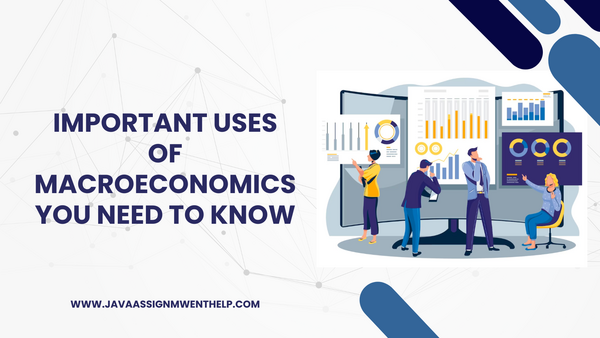Notifications
ALL BUSINESS
COMIDA
DIRECTORIES
ENTERTAINMENT
FINER THINGS
HEALTH
MARKETPLACE
MEMBER's ONLY
MONEY MATTER$
MOTIVATIONAL
NEWS & WEATHER
TECHNOLOGIA
TV NETWORKS
VIDEOS
VOTE USA 2026/2028
INVESTOR RELATIONS
COMING 2026 / 2027
ALL BUSINESS
COMIDA
DIRECTORIES
ENTERTAINMENT
FINER THINGS
HEALTH
MARKETPLACE
MEMBER's ONLY
MONEY MATTER$
MOTIVATIONAL
NEWS & WEATHER
TECHNOLOGIA
TV NETWORKS
VIDEOS
VOTE USA 2026/2028
INVESTOR RELATIONS
COMING 2026 / 2027
 Java Help -
April 5, 2023 -
Technology -
764 views -
0 Comments -
0 Likes -
0 Reviews
Java Help -
April 5, 2023 -
Technology -
764 views -
0 Comments -
0 Likes -
0 Reviews

Macroeconomics is the branch of economics that deals with the study of the economy as a whole. It focuses on the aggregate behavior of the economy and analyzes various economic indicators such as GDP, inflation, unemployment, and national income. The primary goal of macroeconomics is to understand the factors that drive the economy and the policies that can be implemented to promote growth and stability.
Here are some of the most important uses of macroeconomics:
Note: If you are a student and struggling with your Macroeconomics Assignment Help, then you can get the best Macroeconomics Assignment Help from our experts.
Macroeconomics is used to understand business cycles, which are the fluctuations in economic activity that occur over time. These cycles include periods of growth, contraction, and recovery. Understanding these cycles is important for policymakers, as it helps them design policies that can stabilize the economy during times of economic turmoil.
One of the most important uses of macroeconomics is in the formulation of monetary and fiscal policies. Monetary policies refer to the actions of central banks to regulate the money supply and interest rates, while fiscal policies refer to the actions of governments to regulate spending and taxation. Macroeconomic models are used to determine the optimal levels of monetary and fiscal policies that can promote economic growth and stability.
Macroeconomics is used to analyze economic growth, which is the increase in the production of goods and services over time. Understanding the factors that drive economic growth, such as investment, technological change, and education, is important for policymakers, as it helps them design policies that can promote long-term economic growth.
Macroeconomics is used to study inflation, which is the increase in the general level of prices in an economy. Inflation can be caused by a variety of factors, including changes in the money supply, changes in aggregate demand, and changes in supply. Understanding the causes of inflation is important for policymakers, as it helps them design policies that can prevent or mitigate inflationary pressures.
Macroeconomics is used to evaluate international trade, which is the exchange of goods and services between different countries. Macroeconomic models are used to determine the impact of trade on the economy, including the effects on employment, wages, and income distribution. Understanding the impact of international trade is important for policymakers, as it helps them design policies that can promote economic growth and stability.
Macroeconomics is used to assess the impact of government policies on the economy. This includes policies such as taxation, regulation, and subsidies. Macroeconomic models are used to evaluate the impact of these policies on the economy, including the effects on employment, wages, and economic growth.
Macroeconomics is used to understand income distribution, which is the distribution of income across different households in an economy. Understanding income distribution is important for policymakers, as it helps them design policies that can reduce poverty and inequality.
In conclusion, macroeconomics is an essential tool for understanding the behavior of the economy as a whole. It is used to analyze economic indicators, such as GDP, inflation, and unemployment, and to design policies that can promote economic growth, stability, and social welfare. The uses of macroeconomics are vast and varied, and it is a critical field for policymakers, economists, and businesses alike.
